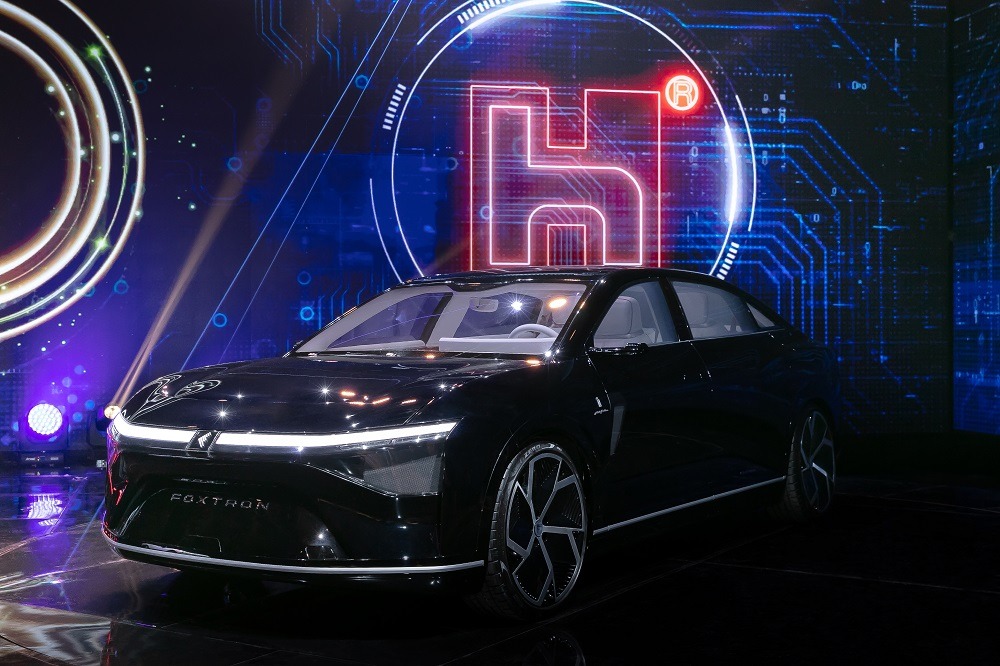Foxconn unveils three new BEVs
22 October 2021

Taiwanese manufacturer Foxconn (Hon Hai Precision Industry) has unveiled three battery-electric vehicles (BEVs) under its Foxtron brand. The Model C, an SUV, the Model E, a saloon, and the Model T, a bus, were all revealed on a live stream as part of the Hon Hai Tech Day 2021 (HHTD21) event.
Foxconn might be best known for building consumer goods, like the iPhone, but this latest move follows its commitment to become a ‘next-generation automotive manufacturer.’ However, the concept vehicles produced are an illustration of what the manufacturer could build for other companies and will not be made for the marque itself.
The Taiwanese manufacturer is also considering manufacturing BEVs in Europe, India and Latin America according to Reuters. This could also include indirect cooperation with German carmakers.
The electric revolution has brought with it a wave of new market entrants, all hoping to capitalise on a transformative moment as the rules of mobility are rewritten. Foxtron is itself a joint venture between Taiwanese manufacturer Yulon Motor and Foxconn. The latter’s chairman, Young Liu, said that since its Tech Day in 2020, the company has announced one partnership a month on average.
Model C
Kicking off HHTD21 was Lilian Yen Chen, Yulon CEO, who appeared alongside the Model C SUV. As the first BEV built on Foxconn’s open platform, the manufacturer explains its four foundation features are shape, space, power, and energy consumption.
While sporting a minimalist appearance and mechanical design, seating and storage space is maximised. At 4.6m long, with a wheelbase of 2.8m, the Model C will seat up to seven people. Reportedly capable of accelerating from 0 to 100km/h in 3.8 seconds and with a drag coefficient of 0.27, the manufacturer claims the car can deliver an extended range of 700km. However, neither the test cycle nor the battery cycle were disclosed by the company in its release.
‘Thanks to the open platform-sharing advantages, consumers can have a pure electric SUV with high performance, high efficiency, high intelligence, low-energy consumption and large space at a reasonable price compared to a fuel-powered car,’ Foxconn said.
Carmakers are keen to develop electric SUVs, as these models tap into two major industry trends: electromobility and bigger form factors. The people buying these vehicles are helping OEMs balance their books as they are having to invest heavily into designing new platforms, reworking factories, and sourcing materials.
Model E
Founder of Foxconn, Terry Gou, drove out at HHTD21 in a Model E. Jointly developed by the Taiwanese manufacturer and Italian design firm Pininfarina, this luxury flagship is aimed at ‘middle and high-end consumers.’
The business applications are apparent as the rear-space can transform into a mobile office, and can connect systems to mobile devices, enabling smart applications like face-recognition doors, smart windows and vehicle and environment interfaces. The Model E can reportedly deliver 750 horsepower, accelerate from 0 to 100km/h in 2.8 seconds, and has a range of 750km.
Gou believes that the adoption of BEVs would inevitably be a global trend as it takes the throne in becoming the world’s largest and most expensive electronic device. He foresees Taiwan as being able to fulfil a key role in this electric shift thanks to its manufacturing capabilities, including semiconductors, modules, precision machinery and operation.
Model T
The Model T urban bus sports a ‘highly rigid body’ meeting Federal Transit Administration (FTA) regulations and standards. Additionally, the manufacturer says it has completed 200,000km of endurance tests and more than 1,000 hours of rigid strength tests at the Automotive Research and Testing Centre (ARTC). Its battery can reportedly withstand temperatures of up to 400°, cover more than 400km, and take the bus up to a maximum speed of 120 km/h.
Building new BEVs is an enormous challenge and entering global markets with them, possibly more so. However, an additional challenge that Foxconn may have to reckon with is the naming convention behind these models. Ford holds the naming rights to the landmark Model T and previously objected to Tesla naming its Model 3, as it is now known, the Model E.
Article image source: Foxconn



